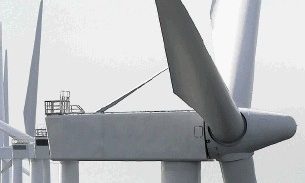
Siemens AG, Europe’s largest engineering company, reported fiscal third-quarter profit that beat analyst estimates as the dollar’s gains against the euro offset the slumping oil price’s detrimental effect on its energy business.
Profit from so-called industrial operations rose 0.9 percent to 1.82 billion euros ($2 billion), the Munich-based company, which sells trains, gas turbines, medical scanners and factory-automation gear, said Thursday. That beat the 1.74 billion-euro average estimate of seven analysts in a Bloomberg survey. The stock gained as much as 3.4 percent.
Sales increased 7.6 percent to 18.8 billion euros. The dollar provided a tailwind, appreciating by almost a quarter against the euro in the 12 months through June 30. Excluding adjustments such as currency effects, Siemens’s sales would have dropped 3 percent in the three months through June.
The price of Brent crude has fallen by half in the past year, challenging the efforts of Chief Executive Officer Joe Kaeser to focus Siemens on energy generation and distribution. Since he took over in August 2013, the executive has spent almost $9 billion on buying oil and gas equipment specialist Dresser-Rand Inc. and Rolls-Royce Holdings Plc.’s energy unit.
“The quarterly numbers are good, given the low expectations,” Frankfurt-based Commerzbank analyst Ingo Schachel, who rates Siemens hold, said by telephone.
Revenue at the power and gas division, the unit most starkly affected by oil’s tumble, would have fallen 15 percent were it not for the dollar’s gains. That currency advance meant reported revenue climbed 0.9 percent to 3.2 billion euros. Profit at the unit fell 47 percent to 289 million euros.
Management Changes
Sales on a comparable basis also declined at the wind power, process industries and mobility unit, which builds trains. Process industries chief Peter Herweck bore the brunt of the 12 percent profit decline at his unit, and will be replaced on Oct. 1 by Juergen Brandes, a 25-year Siemens veteran.
The decline in the price of oil has led some analysts and investors to question Kaeser’s strategy. The executive has responded by cutting further jobs at Siemens’s power and gas division, bringing the total reductions announced since December to 13,100. Kaeser, who also started to weed out underperforming units, has said he doesn’t expect Siemens’s growth to outpace that of competitors until 2016.
Divisional Performance
Five of Siemens’s eigth operational divisions reported profit improvements in the third quarter, with the energy management business posting the biggest improvement. After delays to offshore wind connections burdened earnings in recent years, it posted a 110 million-euro profit, compared with a 67- million euro loss a year earlier.
“Overall our businesses delivered solid underlying profitability despite a softening market environment,” Kaeser said Thursday.
The company confirmed its full-year forecast of earnings per share to increase by at least 15 percent, and profit from the industrial business to represent between 10 percent and 11 percent of sales. It reached 9.5 percent in the third quarter.
Before today, Siemens has risen 12 percent in Frankfurt trading since Kaeser took over, while Germany’s DAX index gained 17 percent.
Recommended for you
